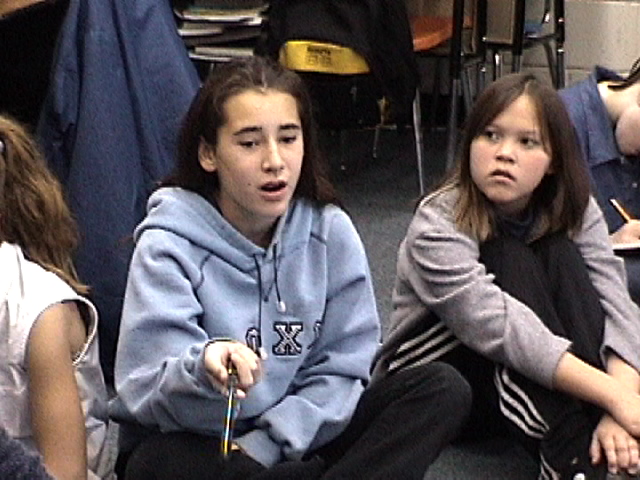
It was
an important meeting, the kind where all the chairs and desks are pushed
to the side. It was a meeting where I had to introduce an idea in such
a way that would peak their interest, enough so that they would make it
their own. By the end of that meeting it felt as if a weight had been
lifted. They were inspired, I just needed to provide a bit of direction.
This is a section about beginnings. Beginning to look at ones own wants
and needs without much concern for others. Introducing a project of this
magnitude can be somewhat daunting. Being afraid that I would introduce
it in the wrong way, not capturing their interest would keep me from really
planning it out.
This phase was a rather brief, yet powerful step in helping the students find a place in conversation. It began with the introduction of a new piece of riverfront property that would be acquired by the community (click to see a riverside view from an nearby park). My question, “What do you as sixth graders think would a good use of this land?” led to many ideas. I allowed the conversation to grow breaking in only when it wavered far from home (topic). Students were quick to hush each other as they wanted to be able to hear others ideas. They learned to respond to other’s statements by referring to their name and I would gently remind them to disagree without arguing. These interactive skills continued to develop throughout the year.
Each step of the way my students dutifully wrote entries describing their opinions, feelings etc. for that point in time. Rather than grow tired and bored of this procedure, over time their entries grew longer and more in depth with their meanings. These journal entries weren’t edited for grammar in fact they were never even graded. That was saved for other parts of the day. Only if I felt the journal entry wasn’t up to standard would I require a redo. Redoing an assignment connected to this project was a rare occurrence. I included brief examples of the homework assignments given during this phase.
Students had to process the ideas they heard their classmates share. Many would like an idea and continue to build on it. In fact this process became so successful that a full waterpark had been developed with multiple statements. A few students are able to see past this conversation to raise a set of questions that enable their classmates to begin to see beyond their own wants and needs to the realities of our environment. These students had to become aware of their own interests before they could even think to question or understand others.
The video for this phase illustrates the type of tangents a group of sixth graders can take. It begins with their less than enthusiastic a
ttitudes and moves into intense discussions related to the pros and cons of placing either a skateboard or waterpark on this piece of land. Click to read the Outline of the Project Rationale that the students created.
Video: From Bored to Engaged


Click to
view discussion in which the students moved from disengagement to attentiveness
(High Speed Connection/
Low Speed Connection)
STUDENT WORK
TEACHER REFLECTIONS
"I realize that the conversation we just naturally found an ending point or ‘It’ found us..."